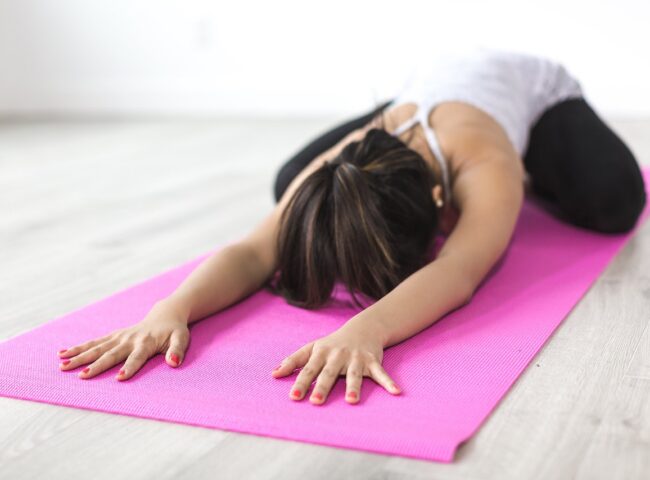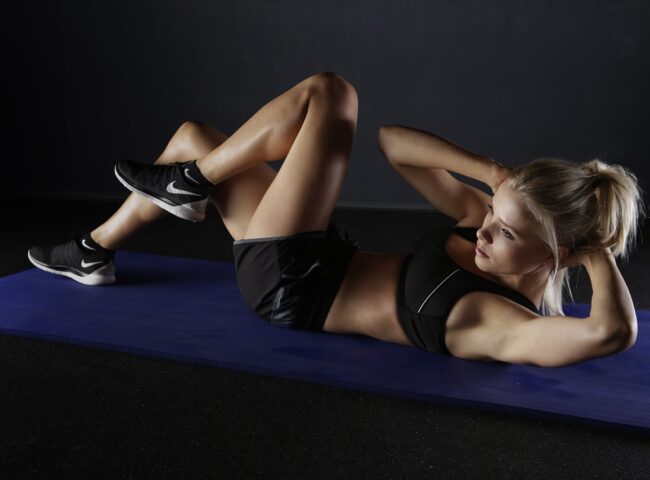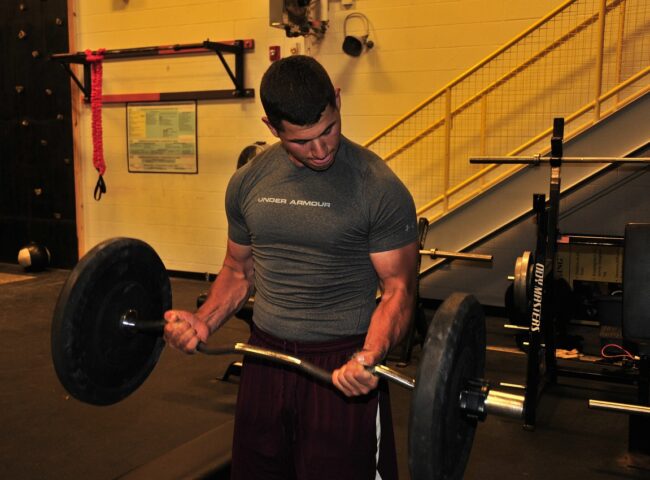Discover effective workout routines to achieve your fitness goals! Whether you’re aiming for weight loss, muscle gain, flexibility, or more, these top 20 routines have you covered. Start your journey today!
Table of Contents
Top 20 Workout Routines for Various Fitness Goals
Achieving your fitness goals requires a well-structured workout routine tailored to your specific objectives. Whether you’re aiming to shed pounds, build muscle, enhance flexibility, or improve overall fitness, we’ve compiled a list of the top 20 workout routines to help you succeed on your fitness journey.
1. Weight Loss: HIIT Circuit – High-Intensity Interval Training (HIIT) is excellent for burning calories and improving cardiovascular health. Alternate between intense bursts of exercise and short rest periods for an efficient fat-burning workout.
HIIT Circuit is a dynamic and time-efficient workout designed to torch calories and boost metabolism. High-Intensity Interval Training (HIIT) involves alternating between short bursts of intense exercises and brief recovery periods. This method effectively elevates heart rate, promoting fat burning and cardiovascular fitness. The HIIT Circuit’s versatility allows for various exercises like jumping jacks, burpees, and mountain climbers. This routine maximizes calorie expenditure in a short time, making it ideal for busy individuals seeking effective weight loss. Always ensure proper warm-up and consult a fitness professional before starting intense workouts.
2. Muscle Gain: 5×5 Strength Training – Focus on compound movements with heavy weights in this classic routine. Perform five sets of five reps to build solid muscle mass and strength.
5×5 Strength Training routine is a tried-and-true approach for building muscle mass and raw strength. This method centers around compound exercises like squats, deadlifts, and bench presses. The “5×5” refers to performing five sets of five repetitions with heavy weights. This routine stimulates muscle fibers for growth and enhances overall strength. Adequate rest between sets is crucial to allow for recovery. As muscle tissues repair and adapt, they become larger and stronger. This routine is favored by bodybuilders and those aiming to pack on solid muscle mass.
3. Flexibility: Yoga Flow – Yoga combines stretches and poses to enhance flexibility and balance. A regular yoga practice can lead to improved range of motion and reduced muscle stiffness.
Yoga Flow is a graceful yet powerful routine that cultivates flexibility, balance, and inner calm. This practice combines a sequence of poses and stretches while focusing on controlled breathing. Consistent participation enhances muscle elasticity, joint mobility, and posture. Yoga’s mental aspect also promotes mindfulness and relaxation. Different yoga styles cater to various levels of flexibility, making it accessible for beginners and advanced practitioners alike. Regular practice gradually leads to increased range of motion and reduced muscle tension, contributing to overall well-being.
4. Endurance: Long-Distance Running – To boost your endurance, gradually increase your running distance over time. This routine helps build cardiovascular strength and mental stamina.
Long-Distance Running is a classic routine for boosting cardiovascular endurance and mental resilience. This routine involves gradually increasing running distances over time, training the body to efficiently utilize oxygen for sustained efforts. Long runs challenge the body’s aerobic capacity, leading to improved lung function and increased stamina. Endurance training also aids in weight management and enhances overall fitness levels. To prevent injury, it’s crucial to follow a progressive training plan and incorporate rest days.
5. Core Strength: Pilates – Pilates focuses on core engagement and stabilization exercises, leading to a stronger and more toned midsection.
Pilates is a core-focused routine that emphasizes controlled movements and core engagement. This method strengthens the deep stabilizing muscles of the abdomen, lower back, and hips. Pilates exercises involve controlled breathing, precision, and fluid motions that enhance core strength and overall muscle tone. A strong core improves posture, supports the spine, and contributes to better balance. Regular Pilates practice also aids in reducing the risk of lower back pain and enhancing athletic performance.
6. Functional Fitness: CrossFit – CrossFit incorporates varied and challenging workouts to improve functional movements like lifting, jumping, and running.
CrossFit is a dynamic and intense routine that targets various functional movements to enhance overall fitness. This regimen combines elements from weightlifting, gymnastics, and cardio workouts, creating a diverse and challenging experience. CrossFit’s high-intensity nature promotes strength, endurance, and agility. The routine’s varied workouts prevent plateaus and keep participants engaged. While effective, beginners should focus on proper form and gradually increase intensity to avoid injury.
7. Bodyweight Training: Calisthenics – Use your body weight for resistance in exercises like push-ups, pull-ups, and squats to enhance strength and control.
Calisthenics is a bodyweight-based routine that utilizes minimal equipment to enhance strength and flexibility. This method involves exercises like push-ups, pull-ups, and bodyweight squats. Calisthenics routines improve muscle control, functional strength, and overall body awareness. The versatility of bodyweight exercises allows for modifications to suit different fitness levels, from beginners to advanced athletes. As participants progress, they can explore more challenging variations to continue their fitness journey.
8. Cardiovascular Health: Swimming – Swimming offers a full-body workout that improves cardiovascular fitness while being gentle on the joints.
Swimming is a low-impact, full-body workout that improves cardiovascular health and muscular endurance. This routine engages major muscle groups while placing minimal stress on the joints. Swimming enhances lung capacity, circulation, and overall cardiovascular fitness. Different strokes and intensities cater to varying fitness goals. Swimming’s rhythmic nature also promotes relaxation and stress relief. Whether you’re a beginner or an experienced swimmer, regular sessions in the pool contribute to improved cardiovascular well-being.
9. Balance and Stability: Tai Chi – Tai Chi involves slow, controlled movements that enhance balance, stability, and mental focus.
Tai Chi is a gentle yet effective routine that focuses on balance, stability, and mental clarity. This ancient practice involves slow, flowing movements that promote relaxation and mindfulness. Tai Chi enhances body awareness and coordination, making it particularly beneficial for older adults to reduce the risk of falls. Regular practice cultivates a sense of calm and centeredness while improving posture and joint flexibility.
10. Stress Relief: Mindful Movement – Activities like tai chi, qigong, and walking meditation can help reduce stress and promote relaxation.
Mindful Movement routines, including Tai Chi, Qigong, and walking meditation, offer a holistic approach to stress relief and relaxation. These practices combine controlled movements, deep breathing, and mental focus to create a harmonious mind-body connection. Mindful Movement routines reduce cortisol levels, alleviate tension, and promote a sense of tranquility. Engaging in these routines regularly provides an opportunity to escape the demands of modern life and find solace in the present moment.
11. Athletic Performance: Plyometrics – Plyometric exercises involve explosive movements to enhance speed, power, and agility.
Plyometrics, also known as “jump training,” is a high-impact routine designed to enhance explosive power and athletic performance. This regimen involves rapid and forceful movements like jumping and hopping. Plyometric exercises activate fast-twitch muscle fibers, which are essential for quick, powerful movements. Incorporating plyometrics into your workout routine improves agility, speed, and vertical jump height. Due to their high intensity, proper form and progression are crucial to prevent injuries.
12. Cross-Training: Circuit Training – Combine strength, cardio, and flexibility exercises in a circuit for a comprehensive full-body workout.
Circuit Training is a versatile routine that combines strength, cardio, and flexibility exercises in a circuit format. This dynamic approach keeps your heart rate elevated while targeting different muscle groups. Circuit Training promotes fat loss, muscle endurance, and overall functional fitness. Participants move from one exercise station to another, allowing for efficient time management and variety in the workout. Adjust the intensity and exercises to match your fitness level and goals.
13. High-Intensity Training: Tabata -Tabata involves short bursts of high-intensity exercise followed by even shorter rest periods. It’s a quick yet effective routine.
Tabata is a brief yet intense routine that maximizes calorie burn and cardiovascular fitness. Named after Japanese researcher Dr. Izumi Tabata, this method involves performing 20 seconds of high-intensity exercise followed by 10 seconds of rest for eight rounds. This four-minute routine can be tailored to various exercises like sprints, burpees, or squats. Tabata workouts boost metabolism and improve anaerobic capacity, making them ideal for time-crunched individuals seeking efficient results.

14. Body Sculpting: Barre Workouts – Barre workouts combine ballet-inspired movements with strength training to target specific muscle groups for a sculpted physique.
Barre Workouts blend ballet-inspired movements with strength training to create a comprehensive body sculpting routine. These routines utilize small, controlled movements to target specific muscle groups, often using a ballet barre for balance. Barre Workouts enhance muscle definition, flexibility, and posture. The routine’s focus on isometric holds and pulsing motions challenges muscles to fatigue, leading to a toned and sculpted physique over time.
15. Mobility: Foam Rolling Routine – Foam rolling helps release muscle tension, improve flexibility, and prevent injuries.
A Foam Rolling Routine is an essential component of maintaining flexibility and preventing injuries. This self-myofascial release technique involves using a foam roller to alleviate muscle tightness and trigger points. By applying pressure to these areas, blood flow increases, promoting muscle recovery and flexibility. Regular foam rolling enhances joint mobility, reduces muscle soreness, and improves overall movement quality.
16. Posture Improvement: Foundation Training – This routine focuses on exercises that strengthen the muscles responsible for good posture.
Foundation Training is a series of exercises that strengthen the muscles responsible for maintaining good posture. This routine targets the muscles of the back, core, and hips to counteract the effects of prolonged sitting and poor posture habits. Foundation Training enhances spinal alignment, reduces back pain, and improves overall body mechanics. Regular practice leads to improved posture, increased body awareness, and enhanced well-being.
17. Low-Impact Fitness: Cycling – Cycling provides a low-impact cardiovascular workout while improving leg strength.
Cycling is a low-impact cardiovascular workout that strengthens leg muscles while being gentle on the joints. This routine improves endurance, burns calories, and enhances overall cardiovascular health. Whether on a stationary bike or cycling outdoors, the rhythmic motion engages various muscle groups and provides an enjoyable way to stay fit.
18. Functional Strength: Kettlebell Workouts – Kettlebell exercises enhance functional strength and coordination, making daily movements easier.
Kettlebell Workouts focus on functional strength and dynamic movements using kettlebells, a versatile piece of equipment. This routine enhances strength, coordination, and balance through exercises like swings, snatches, and Turkish get-ups. Kettlebell Workouts engage both major and stabilizing muscle groups, making them effective for building overall strength and athleticism.
19. Quick Workouts: 7-Minute Routine – Ideal for busy schedules, this quick routine targets multiple muscle groups in just seven minutes.
The 7-Minute Routine is a time-efficient workout that targets multiple muscle groups in a short period. This high-intensity circuit involves performing a series of exercises for 30 seconds each, with 10 seconds of rest in between. Despite its brevity, this routine maximizes calorie burn, improves cardiovascular fitness, and boosts metabolism. Ideal for busy schedules, the 7-Minute Routine can be done anywhere with little to no equipment.
20. Full-Body Transformation: Bootcamp Training – Bootcamp-style workouts combine strength, cardio, and agility drills for a comprehensive transformation.
Bootcamp Training combines strength, cardio, and agility exercises for a comprehensive full-body transformation. This high-intensity routine challenges participants with a variety of drills, promoting fat loss, muscle gain, and improved cardiovascular fitness. Bootcamp Training often involves team-based workouts that provide motivation and a sense of camaraderie. While demanding, this routine delivers remarkable results for those seeking a complete fitness overhaul.
FAQ
Q: What is the best workout routine for weight loss?
A: The HIIT Circuit is highly effective for weight loss. It involves alternating between intense exercises and short rest periods, boosting calorie burn and metabolism.
Q: How can I build muscle effectively?
A: The 5×5 Strength Training routine, focusing on compound movements with heavy weights, is excellent for building muscle mass and strength.
Q: Which routine is best for improving flexibility?
A: Yoga Flow is a great routine for enhancing flexibility. It combines poses and stretches to increase range of motion and reduce muscle stiffness.
Q: What’s a good routine to improve endurance?
A: Long-Distance Running is ideal for improving endurance. Gradually increasing running distances challenges cardiovascular strength and mental stamina.
Q: How can I strengthen my core muscles?
A: Pilates is designed to strengthen core muscles. Its controlled movements and precise exercises contribute to a stronger and more toned midsection.
Q: What routine is suitable for overall fitness improvement?
A: CrossFit is a versatile routine targeting various functional movements, enhancing strength, endurance, and agility for overall fitness.
Q: Can I get fit with bodyweight exercises only?
A: Yes, Calisthenics relies on bodyweight exercises like push-ups and pull-ups to enhance strength and control without the need for external weights.
Q: How can I improve cardiovascular health?
A: Swimming is a low-impact, full-body workout that improves cardiovascular fitness by engaging major muscle groups and promoting efficient circulation.
Q: What routine helps with balance and stability?
A: Tai Chi, with its slow, controlled movements, enhances balance, stability, and mental focus through mindful body coordination.
Q: Which routines are best for stress relief?
A: Mindful Movement routines like Tai Chi and Qigong, along with walking meditation, offer a holistic approach to relaxation and stress relief.
Q: How can I enhance my athletic performance?
A: Plyometrics, involving explosive movements like jumping, enhances speed, power, and agility, contributing to improved athletic performance.
Q: Is there a routine that combines different exercises?
A: Circuit Training combines strength, cardio, and flexibility exercises in a circuit format, providing a well-rounded workout.
Q: What is Tabata training good for?
A: Tabata is a quick, high-intensity routine that boosts metabolism, burns calories, and improves anaerobic capacity in a short time.
Q: How can I sculpt my body effectively?
A: Barre Workouts blend ballet-inspired movements with strength training, targeting specific muscle groups for a sculpted physique.
Q: What’s the benefit of a foam rolling routine?
A: A Foam Rolling Routine releases muscle tension, improves flexibility, and prevents injuries by increasing blood flow and promoting muscle recovery.
Q: How can I improve my posture?
A: Foundation Training focuses on exercises that strengthen muscles responsible for good posture, promoting alignment and reducing back pain.
Q: What routine is gentle on joints while effective for fitness?
A: Cycling is a low-impact routine that improves cardiovascular fitness and leg strength without putting excessive strain on the joints.
Q: How can I enhance functional strength?
A: Kettlebell Workouts use dynamic movements with kettlebells to improve functional strength, coordination, and overall athleticism.
Q: Which routine is suitable for a quick workout session?
A: The 7-Minute Routine is a time-efficient circuit targeting multiple muscle groups and boosting metabolism in just seven minutes.
Q: What routine offers a full-body transformation?
A: Bootcamp Training combines strength, cardio, and agility exercises for a comprehensive full-body transformation, delivering remarkable results.

Pros and Cons of Different Workout Routines
HIIT Circuit (Weight Loss):
Pros:
- Efficient calorie burning in a short time.
- Boosts metabolism for hours after the workout.
- Requires minimal equipment.
- Improves cardiovascular fitness.
Cons:
- Intense nature might not be suitable for beginners.
- Potential for overtraining if not properly managed.
5×5 Strength Training (Muscle Gain):
Pros:
- Effective for building muscle mass and strength.
- Focuses on compound movements.
- Simple and easy to follow.
- Adaptable to various fitness levels.
Cons:
- Requires access to weights and gym equipment.
- May lead to muscle soreness when starting.
Yoga Flow (Flexibility):
Pros:
- Enhances flexibility and range of motion.
- Improves balance and body awareness.
- Promotes relaxation and stress reduction.
- Accessible to all fitness levels.
Cons:
- Progress might be slower for those seeking intense workouts.
- Not optimal for building muscle mass.
Long-Distance Running (Endurance):
Pros:
- Improves cardiovascular endurance.
- Enhances lung capacity and stamina.
- Can be done outdoors, enjoying nature.
- Boosts mental resilience.
Cons:
- High-impact activity, potentially causing joint strain.
- Requires time commitment for longer runs.
- Not ideal for individuals with certain joint conditions.
Pilates (Core Strength):
Pros:
- Strengthens core muscles and improves posture.
- Focuses on controlled movements and breathing.
- Low-impact routine suitable for all ages.
- Enhances muscle tone and stability.
Cons:
- May not provide significant cardiovascular workout.
- Not ideal for those seeking rapid muscle gain.
CrossFit (Functional Fitness):
Pros:
- Diverse and challenging workouts.
- Enhances overall fitness, including strength, endurance, and agility.
- Fosters a supportive community atmosphere.
- Provides variety to prevent workout boredom.
Cons:
- High risk of injury if not performed with proper form.
- Intense nature might not be suitable for everyone.
- Requires access to equipment and coaching for best results.
Calisthenics (Bodyweight Training):
Pros:
- Requires minimal equipment.
- Improves strength, balance, and flexibility.
- Adaptable to various fitness levels.
- Can be done anywhere, promoting convenience.
Cons:
- Progress might be slower for muscle gain compared to weighted exercises.
- Advanced moves require significant strength and practice.
- Limited in targeting specific muscle groups.
Swimming (Cardiovascular Health):
Pros:
- Low-impact, gentle on joints.
- Full-body workout engaging major muscle groups.
- Improves cardiovascular fitness and lung capacity.
- Enhances endurance and flexibility.
Cons:
- Requires access to a pool.
- Not as effective for muscle building compared to weight-bearing exercises.
- Limited resistance for muscle strengthening.
Tai Chi (Balance and Stability):
Pros:
- Enhances balance, stability, and coordination.
- Promotes relaxation and stress reduction.
- Gentle on the joints and suitable for all ages.
- Improves mental focus and mindfulness.
Cons:
- Progress might be slower for those seeking intense physical workouts.
- Not a high-intensity routine for cardiovascular fitness.
- Requires patience and consistent practice.
Mindful Movement (Stress Relief):
Pros:
- Promotes relaxation and mental well-being.
- Enhances mindfulness and reduces stress.
- Can be practiced anywhere.
- Low-impact routines suitable for all fitness levels.
Cons:
- May not provide substantial cardiovascular or strength benefits.
- Not a primary routine for weight loss or muscle gain.
Plyometrics (Athletic Performance):
Pros:
- Enhances explosive power and speed.
- Improves agility and athletic performance.
- Requires minimal equipment.
- Short workouts with effective results.
Cons:
- High-impact nature can increase risk of injury if not careful.
- May not be suitable for individuals with joint issues.
- Requires proper form and gradual progression.
Circuit Training (Cross-Training):
Pros:
- Provides a balanced full-body workout.
- Combines strength, cardio, and flexibility exercises.
- Can be adapted to different fitness levels.
- Prevents workout plateaus.
Cons:
- Requires access to equipment for a variety of exercises.
- High-intensity circuits may lead to overtraining if not managed.
- May not provide specialized training for specific goals.
Tabata (High-Intensity Training):
Pros:
- Short, efficient workouts.
- Boosts metabolism and burns calories.
- Improves anaerobic capacity.
- Can be tailored to various exercises.
Cons:
- High-intensity nature can be challenging for beginners.
- Requires proper warm-up and technique to prevent injury.
- May not provide as much muscle-building potential.
Barre Workouts (Body Sculpting):
Pros:
- Targets specific muscle groups for toning.
- Incorporates ballet-inspired movements for variety.
- Enhances posture and body awareness.
- Low-impact routine suitable for most people.
Cons:
- Might not provide substantial cardiovascular benefits.
- Limited muscle-building potential compared to weighted exercises.
- Requires access to a barre or suitable substitute.
Foam Rolling Routine (Mobility):
Pros:
- Releases muscle tension and improves flexibility.
- Prevents injuries and aids in recovery.
- Enhances blood circulation to muscles.
- Can be done at home with minimal equipment.
Cons:
- Not a traditional workout routine for cardiovascular fitness.
- May be uncomfortable or painful initially.
- Requires proper technique for effective results.
Foundation Training (Posture Improvement):
Pros:
- Strengthens muscles responsible for good posture.
- Improves spinal alignment and reduces back pain.
- Enhances overall body mechanics.
- Can be integrated into daily routines.
Cons:
- Focuses primarily on posture improvement and core strength.
- Not a high-intensity routine for cardiovascular fitness.
- Requires consistent practice to see long-term benefits.
Cycling (Low-Impact Fitness):
Pros:
- Low-impact exercise gentle on joints.
- Improves cardiovascular fitness and leg strength.
- Can be done indoors or outdoors.
- Suitable for all fitness levels.
Cons:
- May not provide upper body strengthening.
- Limited in targeting specific muscle groups.
- Requires access to a stationary bike or bicycle.
Kettlebell Workouts (Functional Strength):
Pros:
- Enhances functional strength and coordination.
- Utilizes dynamic movements for full-body engagement.
- Can be done with minimal equipment.
- Improves cardiovascular fitness along with strength.
Cons:
- Requires proper technique to prevent injury.
- Beginners might need guidance to use kettlebells correctly.
- Not ideal for individuals with existing joint issues.
7-Minute Routine (Quick Workouts):
Pros:
- Short and time-efficient.
- Targets multiple muscle groups.
- Can be done anywhere with minimal equipment.
- Provides a quick energy boost.
Cons:
- Might not replace longer workouts for all fitness goals.
- Limited time for specific exercises or muscle groups.
- Not as effective for muscle building compared to longer routines.
Bootcamp Training (Full-Body Transformation):
Pros:
- Comprehensive full-body workout.
- Combines strength, cardio, and agility exercises.
- Promotes fat loss, muscle gain, and overall fitness.
- Fosters a motivating group atmosphere.
Cons:
- High-intensity nature may not be suitable for beginners.
- Requires proper form to prevent injury.
- Intense workouts might lead to overtraining if not managed.

Each workout routine comes with its own set of pros and cons. The ideal routine depends on your fitness goals, preferences, and physical condition. Consider consulting a fitness professional to determine which routine aligns best with your needs. Incorporating a variety of routines over time can help you enjoy the benefits of different training styles while minimizing potential drawbacks. Remember, the key to successful fitness is consistency and a well-balanced approach.
Select the workout routine that aligns with your fitness goals and preferences. Remember that consistency is key – whether your aim is weight loss, muscle gain, flexibility, or overall well-being. Always consult a fitness professional before starting a new exercise regimen, especially if you have any underlying health conditions. Embark on your fitness journey with determination and watch as you achieve the results you desire.







Leave feedback about this